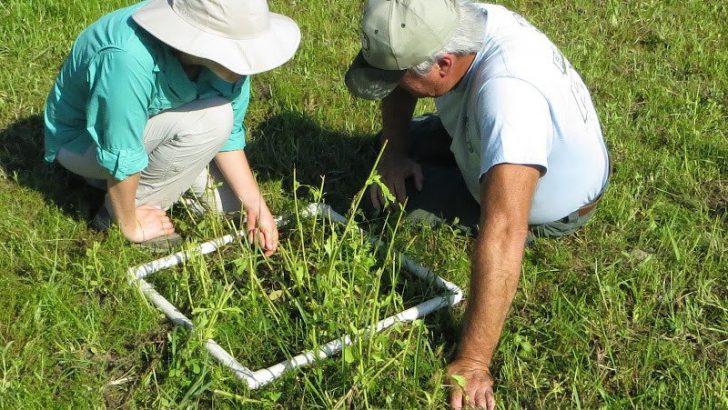Children’s Corner
If you have ever wondered, when strolling through a meadow or forest, how is it humanly possible to know what species of plant and animal live in a certain area, while also being able to scientifically estimate the amount of each – it’s not so difficult.
Biologists have studied different areas in order to understand what lives there and why for centuries.
Many researchers prefer studying plants and animals in their natural habitats without disturbing them. However, many areas are often too large for a team of researchers to adequately study.
Using a quadrat is affordable and fun and is a great way to get out and about. A quadrat is a square tool that is divided into sections. It is thrown into a random section of earth where you can observe what’s inside the squares and make assumptions about the amount of plants and animals in the wider area.
In order to make your quadrat you will need:
Scissors, duct tape or similar, 4×12 inch long sticks or garden canes per quadrat and string
-Cut your duct tape into strips roughly 1cmx15cm with the scissors.
-Placing two sticks together, wrap the tape strip around the crossing point several times, alternating the direction each time.
-Repeat the second step with the other three corners to make a square frame.
-Tie a piece of string first lengthways, and then crossways, dividing the square into sections. The quadrat shown on the right is divided into four equal sections, but quadrats are commonly divided into many more.
Now that the quadrat is ready, all that’s needed is to brush up on how to record your findings.
Plants, slow-moving animals and faster-moving animals with a small range (like insects) are ideally suited for quadrat studies. For example, ants move fairly quickly but always organise around a stationary ant hill. Quadrats are useful for studying both the distribution of ant hills within a larger area and ant behaviour within the sample area.
On your data collection sheet, record observations about where the quadrat is located, any significant features, such as slope of the land, waterways, large rocks or trees. It’s best to use a GPS app or visual marker to record the quadrat location as to not repeat locations.
When you’ve randomly placed your quadrat, begin in one corner and count and record the plants and animals you can see. Sometimes, you might need to gently lift an object, such as a rock, to see if an animal is underneath. Be sure to return the object to its original place. Record the information.
If you find a species that you cannot identify, write a description of it and/or photograph it. Place a ruler next to the species to show its size. Return all living creatures to the place you found them.
Doing this several times will increase the accuracy of your results. Whether it be creepy crawlies or magnificent flowers, who knows what there is to be found in your chosen location? Now you know a method of finding out!


 Chai Brady
Chai Brady
